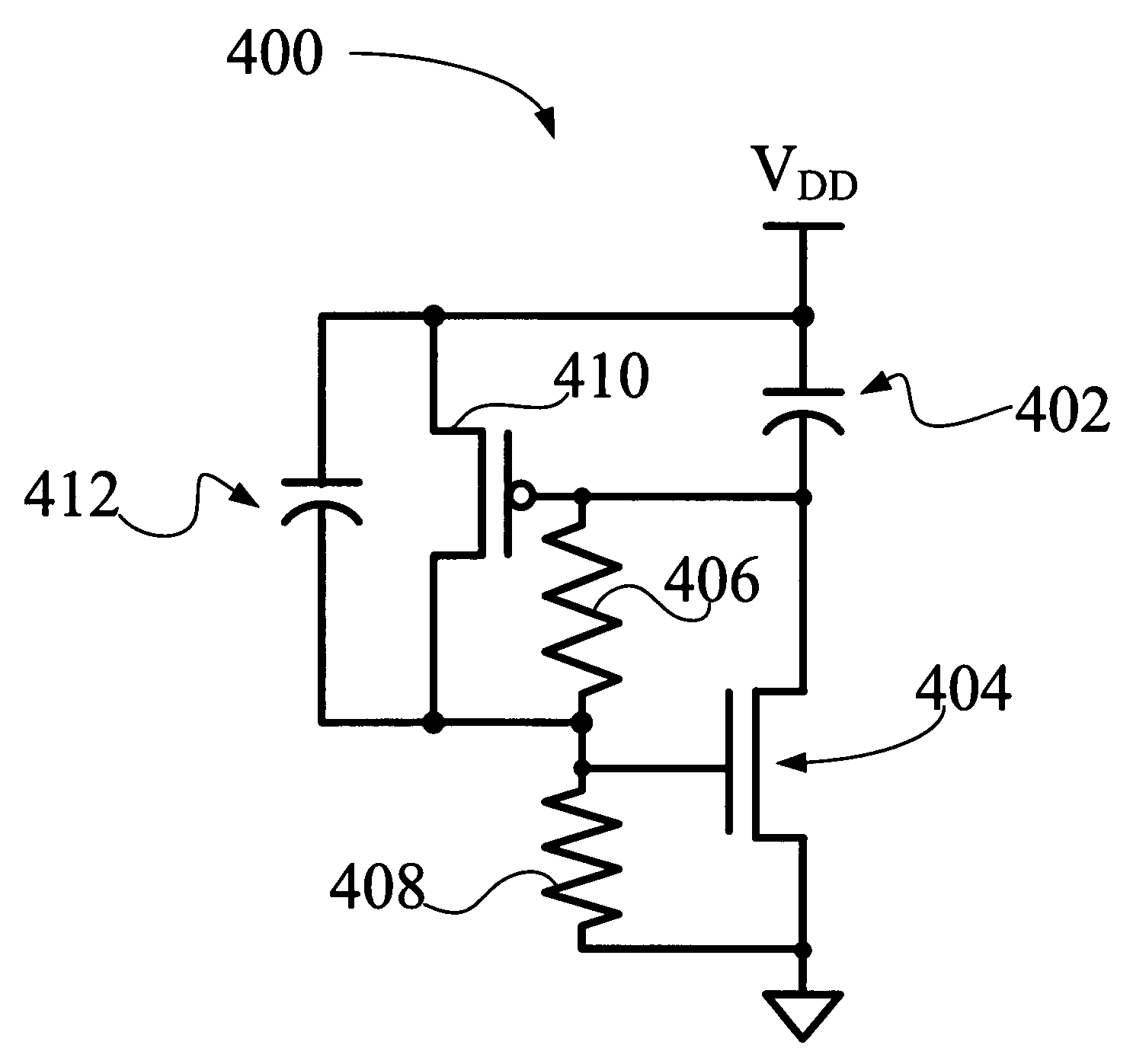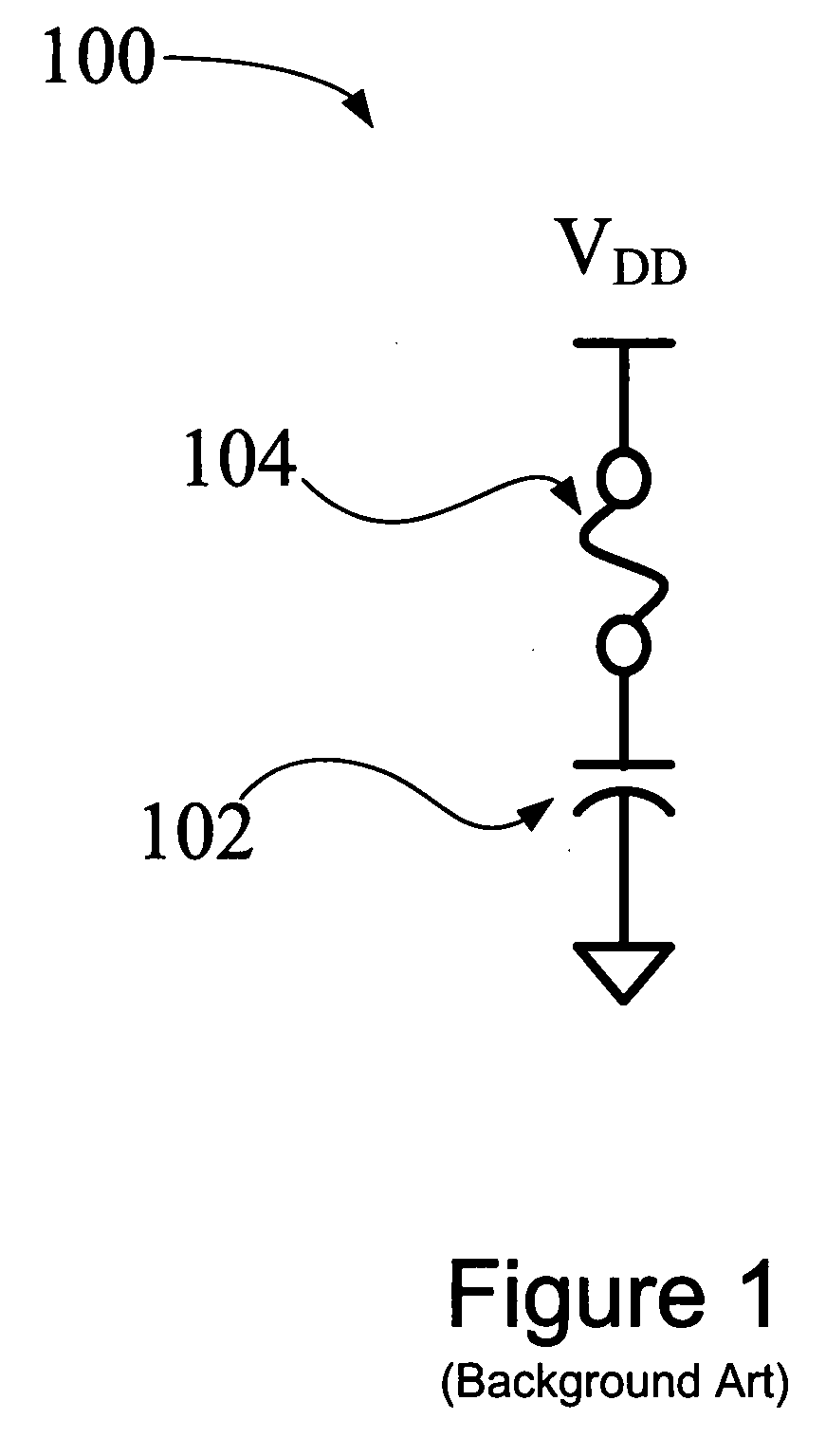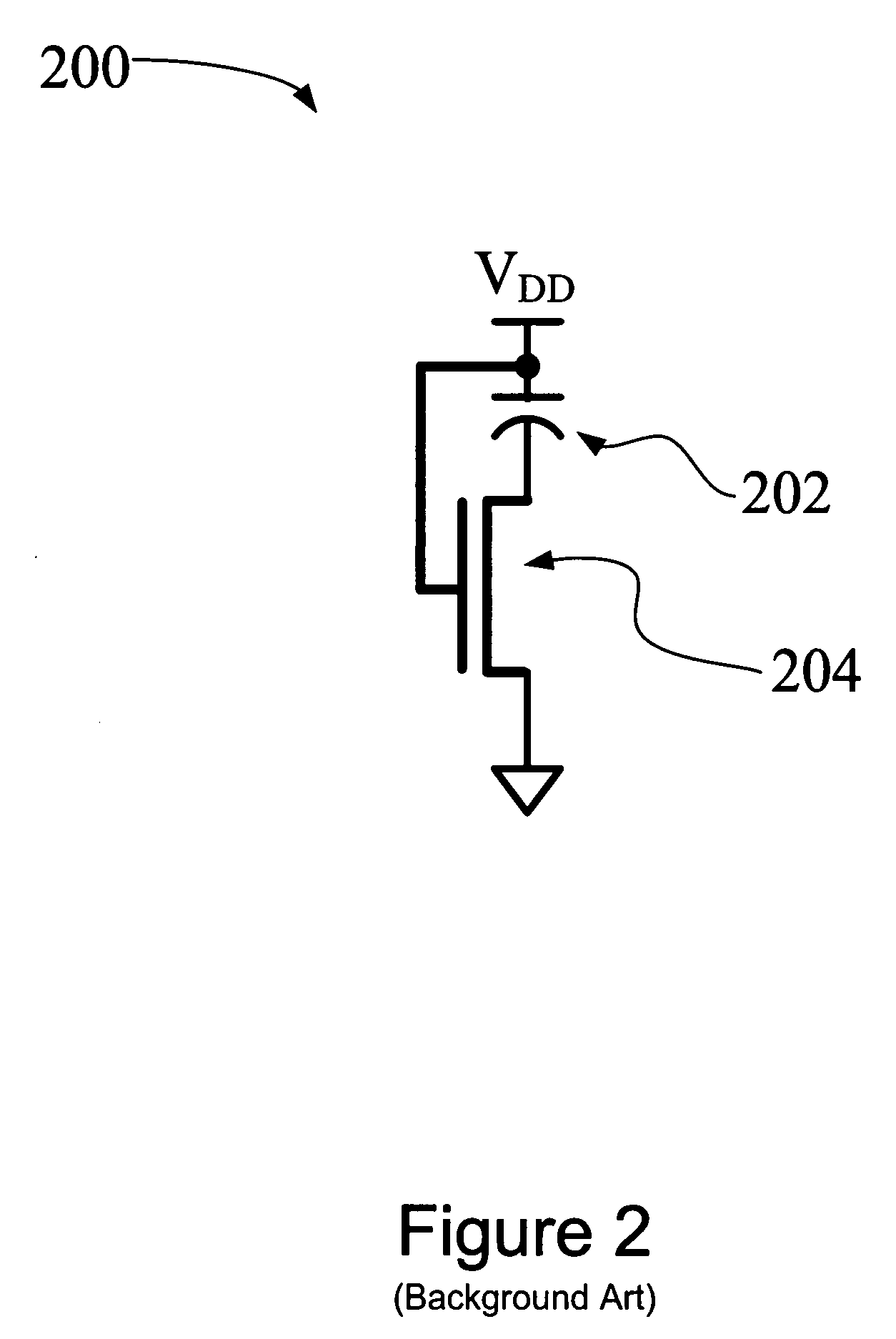Decoupling capacitor control circuit and method for enhanced ESD performance
a control circuit and capacitor technology, applied in the direction of circuit arrangements, electrical equipment, circuit arrangements responsive to excess voltage, etc., can solve the problems of introduction of unwanted inductance, and improper operation of electronic circuits
- Summary
- Abstract
- Description
- Claims
- Application Information
AI Technical Summary
Benefits of technology
Problems solved by technology
Method used
Image
Examples
Embodiment Construction
[0026]In the following description, certain details are set forth in conjunction with the described embodiments of the present invention to provide a sufficient understanding of the invention. One skilled in the art will appreciate, however, that the invention may be practiced without these particular details. Furthermore, one skilled in the art will appreciate that the example embodiments described below do not limit the scope of the present invention, and will also understand that various modifications, equivalents, and combinations of the disclosed embodiments and components of such embodiments are within the scope of the present invention. Embodiments including fewer than all the components of any of the respective described embodiments may also be within the scope of the present invention although not expressly described in detail below. Finally, the operation of well known components and / or processes has not been shown or described in detail below to avoid unnecessarily obscur...
PUM
 Login to View More
Login to View More Abstract
Description
Claims
Application Information
 Login to View More
Login to View More - R&D
- Intellectual Property
- Life Sciences
- Materials
- Tech Scout
- Unparalleled Data Quality
- Higher Quality Content
- 60% Fewer Hallucinations
Browse by: Latest US Patents, China's latest patents, Technical Efficacy Thesaurus, Application Domain, Technology Topic, Popular Technical Reports.
© 2025 PatSnap. All rights reserved.Legal|Privacy policy|Modern Slavery Act Transparency Statement|Sitemap|About US| Contact US: help@patsnap.com



